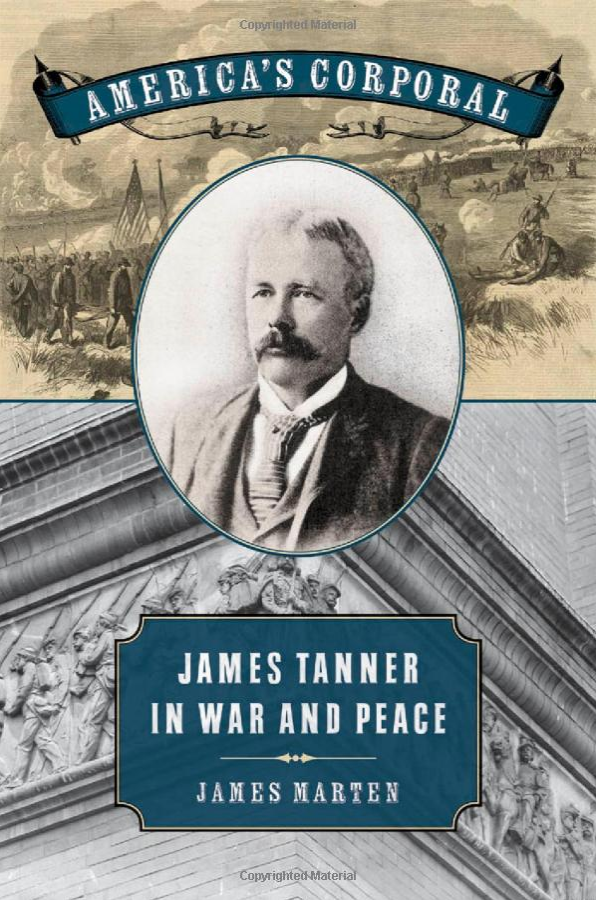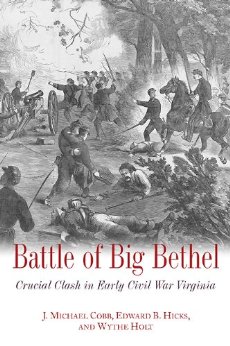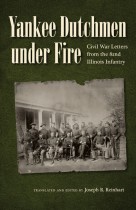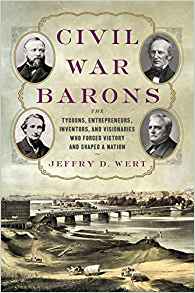America’s Corporal: James Tanner in War and Peace by James Marten. University of Georgia Press, 2014. Paper, ISBN: 0820343218. $24.95.
 The cover blurb for America’s Corporal describes the book’s subject, James Tanner, as perhaps the most famous nineteenth-century American whom no one has heard of. Indeed, as historian James Marten shows in this biography, Tanner became a household name during the decades after the Civil War, but his celebrity faded quickly after his death. Although the event that largely shaped most of Tanner’s adult life occurred during his short stint as a Union infantryman, his fame came after the war — so it is likely that even diehard Civil War buffs, if their interest ends with the cessation of hostilities, are unfamiliar with Tanner and his exploits.
The cover blurb for America’s Corporal describes the book’s subject, James Tanner, as perhaps the most famous nineteenth-century American whom no one has heard of. Indeed, as historian James Marten shows in this biography, Tanner became a household name during the decades after the Civil War, but his celebrity faded quickly after his death. Although the event that largely shaped most of Tanner’s adult life occurred during his short stint as a Union infantryman, his fame came after the war — so it is likely that even diehard Civil War buffs, if their interest ends with the cessation of hostilities, are unfamiliar with Tanner and his exploits.
James R. Tanner (1844-1927) enlisted in the 87th New York Infantry at the age of seventeen and lost the lower part of both legs after being struck by an artillery fragment at Second Manassas. A recipient of a pair of army-supplied artificial limbs—but little else in terms of government assistance—Tanner quickly began to show the resilience, drive, and ambition that would characterize the remainder of his life. In short, he became active in politics and ended up being highly influential in the Republican Party, though he never held elective office. He was a tireless advocate for veterans and was appointed Commissioner of Pensions. He was a popular lecturer, eventually selected as Commander in Chief of the Grand Army of the Republic. Marten fills in the details in this well written, albeit short, biography.
Tanner did not leave personal papers, but Marten assembled a coherent and entertaining story from the resources at hand. In fact, Marten’s comments about his sources (many of them electronic) should be instructive for historians. When there are gaps in specific knowledge about Tanner, Marten supplies comments about the era gleaned from period references. He carefully informs readers when he is speculating or when historical accounts may be unreliable. The author treats his subject even-handedly by pointing out how Tanner sometimes behaved inconsistently or professed beliefs that, while common at the time, would not pass muster in today’s climate of political correctness.
The details of Tanner’s life are interesting enough on their own, but they also provide a window into the mores, attitudes, beliefs, and events of the era. Tanner’s plight as a double amputee made him especially sensitive to the needs of veterans, but his activities were multidimensional. Marten does an admirable job providing context for Tanner’s story—why, for example, he was wildly popular among veterans, Republicans, and audiences who wanted an entertaining talk. This background is necessary and enlightening, but it is not comprehensive enough to characterize the era, or to substantiate some of Marten’s conclusions. Marten calls Tanner “this representative man of the Gilded Age” (159) and says that he “epitomized crucial aspects of the Gilded Age” (166), but does so without defining the Gilded Age in terms of its years — or its “crucial aspects.” Thus, readers who are not scholars of the late nineteenth century may not be able to tell whether Tanner really represented the times.
The term “Gilded Age” appears nearly thirty times in the book and five times in the cover blurb, often simply to indicate when an event occurred. In other instances, Marten alludes to Gilded Age characteristics, but stops short of describing them. For example, he refers without elaboration to “Gilded Age ambitions” (37), “the dynamic economy of the Gilded Age” (39), “the Gilded Age culture of greed” (60), and “a typical Gilded Age do-gooder” (146). One might get some notion from such passages about how Marten views the era, but it is a fuzzy idea at best and not easily distinguishable from how other historical periods—such as our current one, for example—might be described. The Gilded Age was probably too complex and multifaceted for Marten to have provided a satisfactory description of it as background for a short biography. But in any event, without such description, the claim that Tanner represented the era is unconvincing.
On the whole, though, America’s Corporal is still satisfying. Marten effectively shows how Tanner was affected by his environment and how Tanner, in turn, influenced what happened around him. The book tells a good story, supports itself with solid research, and is eminently readable. History enthusiasts whose interests have been confined to the Civil War years would do well to read this short book, for it shows how the conflict continued to affect America — and especially her veterans — for decades after the last shot was fired.
Guy R. Hasegawa is the author of Mending Broken Soldiers (2012).




